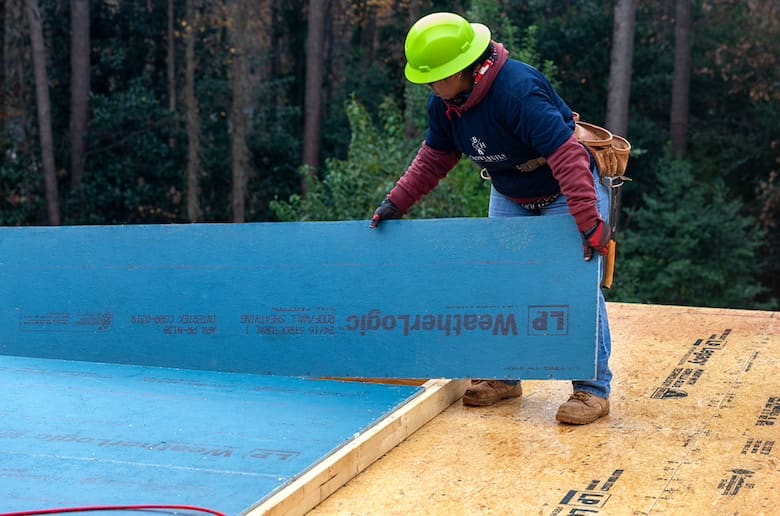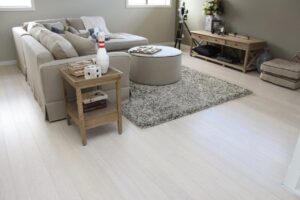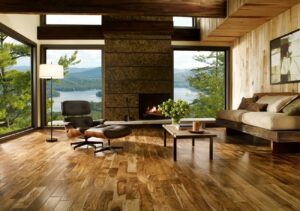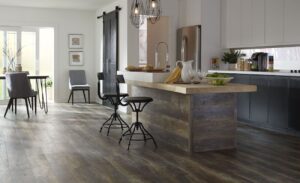WeatherLogic vs Zip sheathing systems are at the forefront of construction technology, with both offering robust water and moisture resistance—critical for maintaining a comfortable and durable living space. Yet, constructors often grapple with the longevity and financial sense of such investments.
A 30-year warranty is a testament to the confidence in these materials, with Zip taking a step further by adding a 180-day exposure guarantee, potentially swaying cost-conscious decisions.
Price points also play a pivotal role; WeatherLogic’s affordability contrasts with Zip’s premium cost, despite the latter’s stronger market presence.
These factors significantly influence the choices builders make, seeking both quality and value in their selections.
Quick Compare
| Feature | WeatherLogic | Zip |
|---|---|---|
| Water Resistance | High | High |
| Warranty | 30 years | 30 years + 180-day guarantee |
| Price | Affordable | Higher with more features |
| Popularity | Growing | Well-known |
| Structural Durability | Structural 1 rating | Structural 1 rating |
| Installation | No housewrap needed | No housewrap needed |
| Key Features | Integrated barrier, fire-resistant, varies in thickness | Integrated underlayment, adhesive tape, vapor permeable |
| Market Position | Newer, budget-friendly | Established, builder-preferred |
| Permeability | Very high | 13+ perms |
| Availability | Less accessible | Widely available |
| Wind Resistance | Not specified | High |
| Customer Support | Mixed reports | Not specified |
| Competition | Competitor to ZIP | Market leader |
Key Differences Between WeatherLogic and Zip
The choice between WeatherLogic vs Zip sheathing systems hinges on distinct differences that impact the building’s integrity and the project’s budget.
Comparing Water/Moisture Resistance Technologies
WeatherLogic employs a synthetic polymer-based coating to guard against water infiltration, promising to keep structures dry and secure. Zip, on the other hand, utilizes a more rigid engineered-wood panel approach, combined with a specialized, integrated water-resistive barrier. These differing technologies imply a choice between synthetic flexibility and engineered solidity.
- WeatherLogic: Synthetic coating for versatile protection.
- Zip: Engineered panels with built-in barriers.
Warranty Offerings: Beyond the Year Count
When it comes to warranties, the numbers only tell part of the story. It’s not just about how many years are covered; it’s the conditions and comprehensive nature of the warranty that truly matter.
- WeatherLogic: Offers a 30-year warranty.
- Zip: Extends this with a 180-day exposure guarantee.
Important Note: The fine print of these warranties can significantly affect long-term satisfaction and costs.
Price Point Analysis: Cost vs. Quality in Building Materials
Analyzing the cost and quality of WeatherLogic and Zip reveals the complexity of their value proposition. While WeatherLogic is more affordable upfront, Zip’s higher cost is justified by its additional features and strong brand trust.
- WeatherLogic: More cost-effective option.
- Zip: Higher initial investment with potentially greater long-term value.
Brand Recognition: Market Presence and Builder Trust
Market presence and trust are built over time, and Zip has carved out a significant niche in the industry. Despite WeatherLogic’s strengths, Zip’s brand is often synonymous with quality, influencing builder trust and decision-making.
- WeatherLogic: Growing presence, solid performance.
- Zip: Established brand, widely recognized for quality.
These factors are pivotal in choosing between WeatherLogic and Zip. Builders must weigh immediate costs against long-term benefits, warranty security, and the reputational value each brand brings to the table.
Evaluating Structural Durability and Installation Efficiency
Durability and efficiency are critical in construction materials, with WeatherLogic and Zip offering unique advantages.
Structural 1 Rating: What Does It Mean for Builders?
The Structural 1 rating signifies materials’ resistance to stress and deformation, an essential factor in construction. It reassures builders of the robustness and resilience of their chosen sheathing.
- WeatherLogic: Not commonly rated as Structural 1.
- Zip: Typically holds a Structural 1 rating.
Installation Processes: Simplifying Construction
Both brands aim to simplify the building process, but their installation efficiencies differ, affecting overall project timelines and labor costs.
- WeatherLogic: Requires fewer steps in the sealing process.
- Zip: Boasts an integrated sheathing and barrier system for speed.
Key Features Unpacked: WeatherLogic’s Fire Resistance vs. Zip’s Thermal Insulation
Key features like fire resistance and thermal insulation are critical in sheathing products. They directly influence safety, energy efficiency, and comfort levels within a structure.
- WeatherLogic: Offers enhanced fire resistance.
- Zip: Superior in providing thermal insulation.
Important Note: Builders must prioritize features based on the specific demands of their projects.
Accessibility and Customer Service: Navigating the Market
Accessibility and support are just as important as product features. Both companies provide resources and customer service to support builders before, during, and after installation.
- WeatherLogic: Generally well-reviewed for its customer support.
- Zip: Noted for widespread availability and comprehensive guidance.
Builders must consider these aspects, from structural ratings to installation, features, and support.
These considerations are not just about the durability of materials but also about the smooth progression of construction projects and the well-being of future inhabitants.
Which is Better? A Comprehensive Analysis
Determining the superior sheathing system depends on varied construction needs and standards.
Weather Resistance: Overlays That Protect
Protection against harsh weather is a primary function of sheathing systems. Effective overlays shield structures from moisture and environmental wear.
- WeatherLogic: Uses a synthetic overlay that withstands heavy rain.
- Zip: Has a water-resistant barrier that performs well in varied climates.
Permeability and Energy Efficiency: Assessing the Perm Ratings
Perm ratings measure a material’s breathability, impacting energy efficiency and indoor air quality.
- WeatherLogic: Boasts higher perm ratings, allowing for better moisture evaporation.
- Zip: Offers lower perm ratings, which can be advantageous in maintaining energy efficiency.
Wind Damage and Structural Integrity: Resisting the Elements
A system’s ability to resist wind and maintain integrity is crucial in safeguarding a building’s lifespan.
- WeatherLogic: Delivers substantial resistance to wind uplift.
- Zip: Provides robust wind resistance due to its integrated sheathing system.
Important Note: Both products meet the required codes for wind resistance, with slight variations based on product specifications.
Final Recommendations Based on Comparative Market Position
Our analysis of market position reveals distinct benefits, with the final recommendation depending on specific project requirements.
- WeatherLogic: Recommended for projects requiring higher permeability and fire resistance.
- Zip: Favoured for thermal efficiency and a single-step installation process.
Ultimately, both WeatherLogic vs Zip have their merits.
The choice between the two should be guided by the particular needs of the construction project, considering factors such as weather resistance, energy efficiency, and ease of installation.
Each brand has carved out its own space in the market, and the decision on which to use can significantly impact the long-term success and sustainability of a building.
Conclusion
Weighing the strengths of WeatherLogic vs Zip reveals that both sheathing systems offer unique advantages.
As builders, our selection process should be tailored to project-specific demands, considering each system’s key features. The cost-to-benefit ratio remains a vital factor, requiring a thoughtful balance to ensure the best value.
Looking ahead, market trends may favor one brand over the other, but current indicators suggest both will continue to innovate and serve the construction industry effectively.





